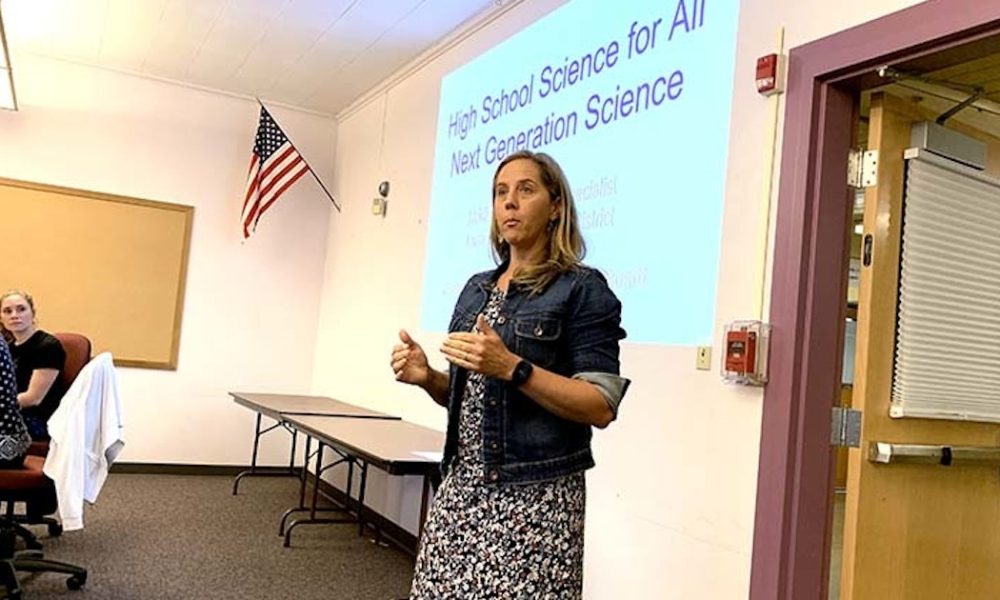 Heidi Rebar, Lane Education Service District curriculum director, presents the context behind the decision to pursue a new science curriculum at the Sept. 11 Creswell School Board meeting. ALIYA HALL/THE CHRONICLE
Heidi Rebar, Lane Education Service District curriculum director, presents the context behind the decision to pursue a new science curriculum at the Sept. 11 Creswell School Board meeting. ALIYA HALL/THE CHRONICLE
CRESWELL – Creswell High School will be adopting a new science curriculum that puts students at the center of instruction. Instead of relying only on textbooks and a lecture from science teachers, students will now have the opportunity to get real-life experience working on hands-on projects.
”Students leaving Creswell will be more proficient in science than they were before,” Principal Adam Watkins said.
The curriculum was presented during the Sept. 11 school board meeting. Representatives from the high school and Lane Education Service District (Lane ESD) spoke about the decision to adopt this new curriculum, and what it means for the district going forward, which includes a funding request for new science equipment.
There was no cost to the district for the curriculum itself, because it is open source, as well as being completely digital. Next month, the school board will discuss and then take action on buying science equipment and determine where that money will be coming from, although Superintendent Mike Johnson said money is available to pay for the equipment.
This curriculum, called Patterns, was created using the Next Generation Science Standards (NGSS) for Oregon, which was adopted in 2014. These standards called for a shift in instruction that takes into account how students learn and will also includes engineering.
Each course meets the NGSS vision, utilizes culturally relevant instructional strategies, is grounded in real-world phenomena, includes engineering design challenges, connects to English language arts and math standards, and makes direct Career and Technical Education (CTE) connections, Heidi Rebar, Lane ESD curriculum director, said in her presentation.
Patrick Doyle, a Creswell High School science teacher, said that in his four years at Creswell he has been shying away from using textbooks in his lessons because students learn more by doing, and through this curriculum they will have a chance to do ”real science” and ”real experiments that haven’t been done before.”
One experiment he has in mind is for students to look at the biodiversity around the school and see how it differs across areas. Instead of doing experiments where students already know the answer, like the ones that test Newton’s Law, the students will be ”asking and answering questions they don’t know the answer to.”
The curriculum will teach biology during freshman year, chemistry during sophomore year and physics during junior year. It will include material from current science elective courses such as environmental and earth and space science, so while those classes will still be available to take as electives, they will no longer count for science credit at CHS because the new science curriculum will already include that information.
”We have some great momentum in science,” Watkins said. ”It’s extremely difficult to get science teachers to agree on what’s important – it’s all important to them – and this group said, ‘What’s important to us is to guide curriculum with what’s important to kids.’”
He added that what he personally loves about the curriculum is that it speaks to what education is about in the present.
”It used to be about content, what I’m telling you to learn,” he explained. ”Content matters, but context matters more now. It’s ‘How do you do it? How do you use it?’ It’s taking content but then applying it. That’s what we’re trying to get kids to do, critically think. It puts information back in students’ hands (with) student-focused instruction.”






